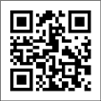資料の原本内容
Tibet Before and After Buddhism
Jeffrey L. Richey, Ph.D.
REL 231
Religions of India and Tibet
Berea College
Fall 2003
TIBETAN RELIGION BEFORE THE 7TH CENTURY CE
Cult of divine king:
Descendant of celestial beings who reach earth via “sky rope”
Perennially reborn essence of royal ancestors
Giver of law ( = cosmic order)
Priestly class (also regarded as incarnations of predecessors):
Bon (“reciters”) – preside over coronations, funerals, sacrifices
Shen – shamans who communicate with spirit world
Since 1000 CE, Bönpo tradition has claimed continuity with pre-Buddhist Tibetan religion
THE ADVENT OF BUDDHISM IN TIBET
By 600s CE, Tibet is major unified power in Asia, rivaling both Chinese Tang Empire (618-907) and Hindu kingdoms in India
During reign of King Songtsen Gampo (c. 627-650), Chinese- and Nepalese-born Buddhist wives allegedly bring Buddhist traditions to the Tibetan court
With Buddhist traditions come Sanskrit and development of Sanskrit-based written script for Tibetan language
By 700s, Indian (Tantric) Buddhist missionaries active in Tibet, and indigenous religion suppressed by royal decree
THE VAJRAYĀNA (TANTRIC) TRADITION
Rooted in tantra (Sanskrit: “warp” of loom, “strands” of braid) – Indian esoteric tradition in Hinduism, Jainism, Buddhism
Outgrowth of Mahāyāna speculation about “Buddha-nature” and “sudden” enlightenment, as well as interaction with Hindu bhākti
Devotees regard the universe (macrocosm) as concrete manifestation of enlightened consciousness that creates and maintains it
Using the body and other microcosms of universe, devotees utilize power of enlightened consciousness for liberation
Devotees visualize and identify with Buddhas and bodhisattvas within in order to achieve enlightenment, using ritual elements as catalysts for transforming consciousness:
kāma (desire, especially sexual)
mantra (sacred words)
mandala (cosmic diagrams)
mudrā (ritual gestures)
Strong emphasis on authority of guru (Tibetan: lama), who may be an incarnate Buddha or bodhisattva
“Right-handed” tantra tends toward internalization and spiritualization of practice (“knowing”-oriented)
“Left-handed” tantra tends toward externalization and concretization of practice (“doing”-oriented)
THE FALL AND RISE OF TIBETAN BUDDHISM
Padmasambhava, an Indian Tantric master later regarded as a Buddha by Tibetans, establishes the first Tibetan Buddhist monastery (c. 779)
Last of Tibetan kings, Lang Darma (r. 836-842), persecutes Buddhism, destroying monasteries and texts
His subsequent assassination leads to 200-year period of disunity in which Buddhist and Bönpo partisans struggle for supremacy
By 1000, Buddhism reintroduced and ties with Indian Buddhism renewed at a time of increasing peril for Buddhism in India
TIBETAN BUDDHISM AND THE TIBETAN STATE
Mongol annexation of Tibet (c. 1200) leads to establishment of Sakya Pandita (d. 1251), monk of Sakyapa sect, as viceroy of Tibet
During Mongol (Yuan) reign over China (1280-1368), rule of Tibet by Sakyapa leaders continues (extending Tibetan Buddhist influence to China)
As Mongol rule wanes, Tibetan Buddhism takes on nationalistic, xenophobic flavor, marked by “discovery” of gTer-ma (“treasure texts”) from India – supposedly long hidden and karmically timed to be revealed at opportune moments
By 1400, Tibetan Buddhism increasingly independent of both Chinese-Mongol political control and Indian religious influence
The Mādhyamika scholar Tsong Kha-pa (1357-1419) leads reform of Buddhist sects, revival of intellectual rigor, and promotion of monastic discipline in Tibet
Leaders of his Gelugpa (“system of virtue”) sect, called Dalai Lama (Mongolian: “Ocean Guru”), regarded as tulku (incarnations) of Avalokiteśvara
In 1642, fifth Dalai Lama becomes spiritual-political ruler of Tibet and asserts himself as equal to Chinese and Mongol heads of state
THE MANDALA IN TIBETAN BUDDHISM
Mandala is Tantric tool for accessing and utilizing the enlightened consciousness both without (in Buddhas) and withi...









